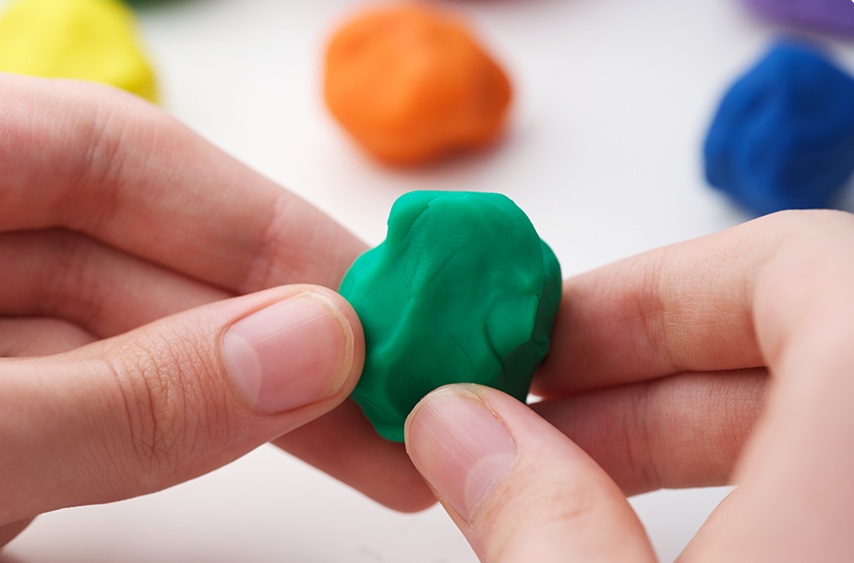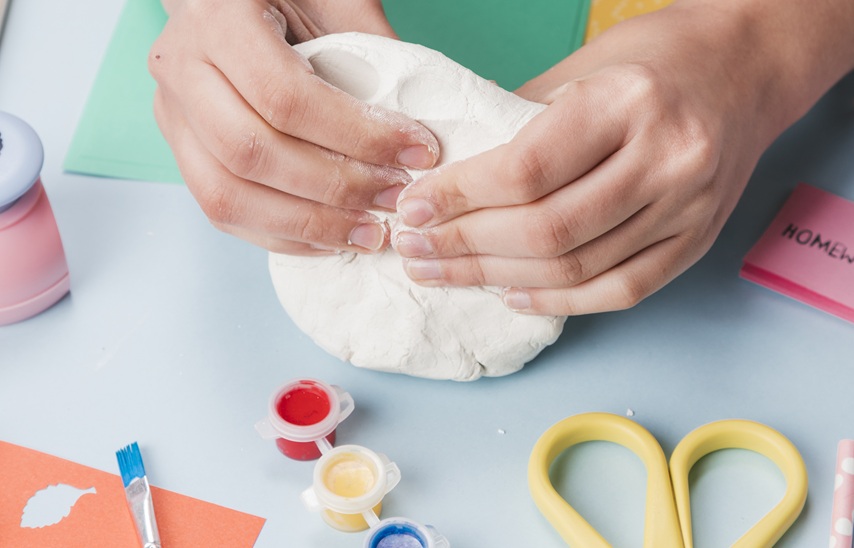Clay is one of the most commonly used products for creating unique and appealing products. Whether designing a sculpture, ornaments, vases or jewellery, this art supply is favoured among artists for its versatility, easy manoeuvrability and affordability. It’s a medium that promotes self-expression and creativity, which is crucial for helping artists improve their creative side.
Generally speaking, this medium is ancient, however, over the years, humans have managed to improve it. Whether choosing one for kids to keep them occupied instead of toys or you are choosing one for yourself, the choice is huge, and so is the chance to find the easiest type to work with.
Types of Modelling Clay

Modelling clay comes in many forms, each offering unique benefits depending on the project and user. Whether you’re a beginner, a hobbyist, or an experienced artist, choosing a user-friendly and pliable modelling clay can make the creative process more enjoyable and accessible.
Air Dry Clay
This type of clay is the easiest to work with because it dries by air. It’s perfect for being used by children, beginners and all those of you who want to try and make some DIY project out of clay. Whether you want to make some decorative ornaments, jewellery, trays, vases or containers, this clay is your best choice.
Not only is it easy to work with, but it also dries overnight. In case there are some signs of cracks or holes, you can easily fix them with the help of water. Speaking of water, if you plan to keep the clay product outdoors, you will need to waterproof it. This can be easily done by applying an air-dry clay varnish or acrylic paint.
Polymer Clay
Before stating anything, you should know that both polymer and air-dry types of clay are similar, with the only difference being in the way they dry. It’s of vital importance to know that this one dries hard, which makes it the perfect type for creating jewellery that can be worn on a daily basis.
The polymer modelling clay is versatile and is great for making sculptures, pots and beading. Unlike the other one, this one needs to be put inside an oven in order to harden. Even though this might seem more complicated to you, the truth is that it’s quite straightforward because once baked, you won’t need to waterproof it. Once dry, this product allows it to be drilled, sanded, painted and even cut. For ease of convenience, you can even use moulds to give the clay the needed shape.
Plaster of Paris
This is a powder-type of product that hardens when mixed with water. This clay is designed to create moulds, sculptures and casts, and in order to be used like that, it needs to be mixed in a 1:3 ratio (one part water and 3 parts plaster). Keep in mind that the less water you use, the stronger the product will be. An important thing to have in mind is not to mix it with your bare hands. Always use a stick or something else to mix it.
While these are one of the most commonly used types, you should know that clay can also be divided into oil-based and water-based.
Oil-Based
All types of oil-based clay are known as modelling clay. They are made from oils, minerals, fillers and waxes, which allow for being used for moulding. Even after a long period of use and shaping, the clay will stay soft and workable, hence the name. This makes it the perfect option for children, beginners and also for professional artists. Keep in mind that its hardness and melting points can differ from one brand to another, but regardless of the type you choose, you can easily melt it and warm it with the help of a heat lamp or a microwave.
Given the fact that it’s known as non-drying, keep in mind that this clay can be hardened by air exposure or when baked in the oven. The only thing you should know about this product is that it isn’t the most suitable option for creating permanent sculptures. An important thing that needs to be stated about it is that it’s completely safe and non-toxic, perfect for being used by little children.
Water-Based
The water-based clay is also known as pottery clay, which needs to be moistened in order to get soft and workable. Once dry, the products become firm and hold their shape for a very long time, which makes them permanent.
Depending on the type you choose, some of them can dry by air to some point, while others must be fired in a kiln. However, some must be fired in a kiln to dry and harden fully. Professional sculptors prefer the use of these types of clay because they can create wonders with them, and they can stand the test of time.
What Is Modelling Clay Used For?

As you can see, this clay can be used literally for anything you want. What matters is choosing the one that will best meet your beginner’s skills.
Which Is Best for Sculpting?
Practice shows that the best beginner’s clay for sculpting is the polymer one. You can work with it and bake it even if you don’t have a kiln or a studio, and the results with be almost the same, minus the mess.
